A foundation of healthy technique is central to being an expressive pianist. As James Rhodes said, “There are eighty-eight keys on a piano and within that, an entire universe”, yet being able to reach that universe, one must have mastered the coordinated action of fingers, wrist, and arm. Harnessing the power of gravity, synchronised gesture and alignment can deliver reliable control and a colourful tonal palette. Whilst the possibilities of musical expression are then unleashed, the development of tension that can become both limiting and damaging is avoided. Any student wishing to have facility and be expressive at the piano needs the fundamentals of technique.
What is Hanon?
Famously known for his progressive and targeted exercises in The Virtuoso Pianist (published in 1873), French piano pedagogue Charles-Louise Hanon, aimed to develop the pianist’s finger strength and independence, wrist and forearm strength, and endurance. Whilst these exercises and variations based on Hanon highlight technical challenges, they also develop the skills to play in time, with rhythmic precision, to subdivide, understand and execute chords, arpeggios, inversions, to transpose with ease by actively thinking in keys, recognise patterns, intervals, explore alternate scales, and understand diatonic versus chromatic alterations. They are literally action packed with valuable learning, which can holistically shape and nurture the next generation of pianists.
There are many editions of Hanon available to suit different learning goals and students.
Here are five to consider using in your studio.
HANON: The Virtuoso Pianist – Edition Peters
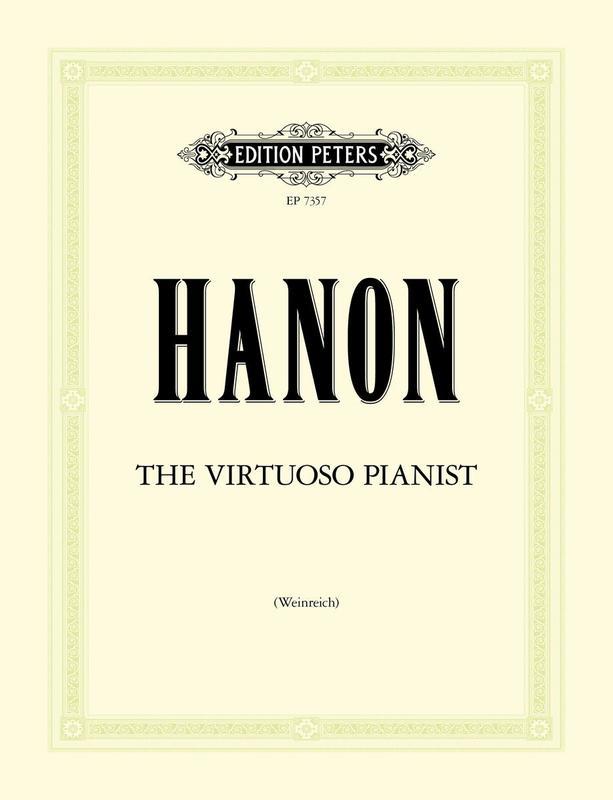
This new edition of the original Hanon has excellent supplementary exercises by Otto Weinreich, which demand deliberate and transferable problem-solving practice skills. Variations include exploring scales in contrary motions, triplets, exchanging rhythms, augmentation, rotation movement, alternative rhythms, whole tone scales, different touches, hand crossing, backwards, separate hands, and passing between hands. Chromatic advancement of exercises promotes transposition skills, thinking within keys, and getting the fingers to navigate accordingly. The book leads students to understand that scales are not about the observation of individual fingers, rather the feeling of fingering corresponding to the keyboard position. Use this highly detailed book for advanced students capable of deciphering scores easily. Support their independent learning by encouraging attention to detail.
HANON-FABER: The New Virtuoso Pianist (Selections from Parts 1 and 2)
Randall Faber – Piano Adventure Series
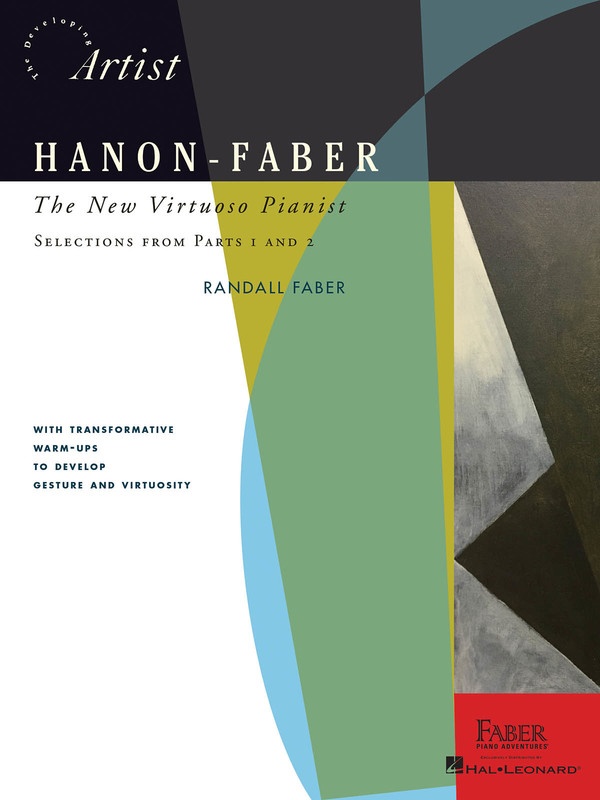
With consideration to the evolution of the piano since the early keyboards of Hanon’s time, Faber presents a pedagogically thoughtful selection of Hanon exercises that systemically develop coordination over tension. Each exercise is scaffolded with smaller exercises sequentially leading the late beginner to intermediate student through the correct motions required to achieve technical and expressive success. The titles unlock the technical element in focus, whilst a glossary provides technique terms for reference. The book is presented with clarity and has online support. For foundations of good technique, this is a reliable resource. Without being overwhelming, it manages to demystify technique through a well-crafted teaching process.
HANON: for the Developing Pianist (Selections from The Virtuoso Pianist)
Hal Leonard Student Piano Library
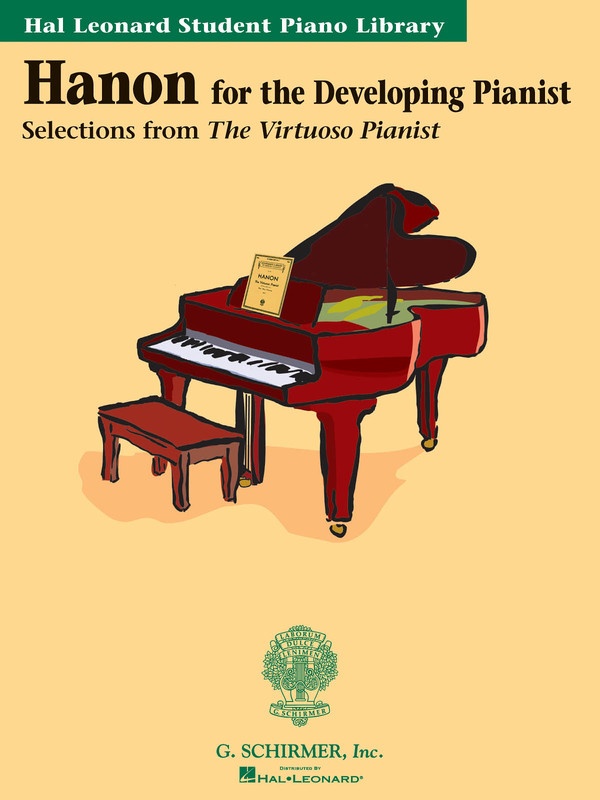
This book contains highly accessible adaptations of Hanon exercises 1-20 with optional audio accompaniments. Adaptations support younger players by placing hands two octaves apart for a more comfortable hand and arm position, shortening exercise length, using quavers instead of semiquavers, and using larger print size. This structured book would appeal to students who benefit from explicit teaching of theoretical concepts, practical connection to technique through worksheets, and who enjoy working through progressive technical exercises. The orchestral accompaniments add powerful harmonic context to these exercises. This is fundamental in nurturing our ability to hear and produce both the horizontal and vertical sounds of music.
JAZZ HANON: Authentic progressive exercises and etudes for the contemporary piano student
Leo Alfassy
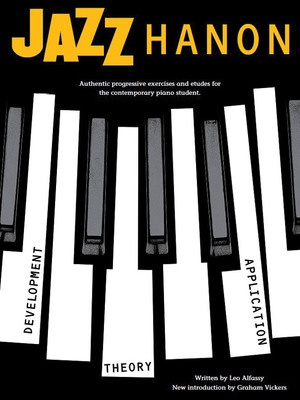
A solid understanding of melodic and harmonic rudiments is at the heart of jazz piano playing, which this book covers theoretically and practically. Chapters focus on particular technical problems using idiomatic language and exploring stylistic jazz features. The exercises are interesting to play, provide focused technical challenge, and constantly engage the ear in harmonic progressions which start to become familiar. Intermediate and advanced students studying contemporary piano would benefit from using this Jazz Hanon book. It could also be an adjunct for pieces of any genre that employ frequent 7th chords, inversions, cycling through the circle of 5ths, chromatic alterations, II-V-I progressions, or block chords. This book is a brilliant combination of complex theory, pianistic development, and practical application.
LATIN HANON: 30 Lessons for the Intermediate to Advanced Pianist
Peter Deneff
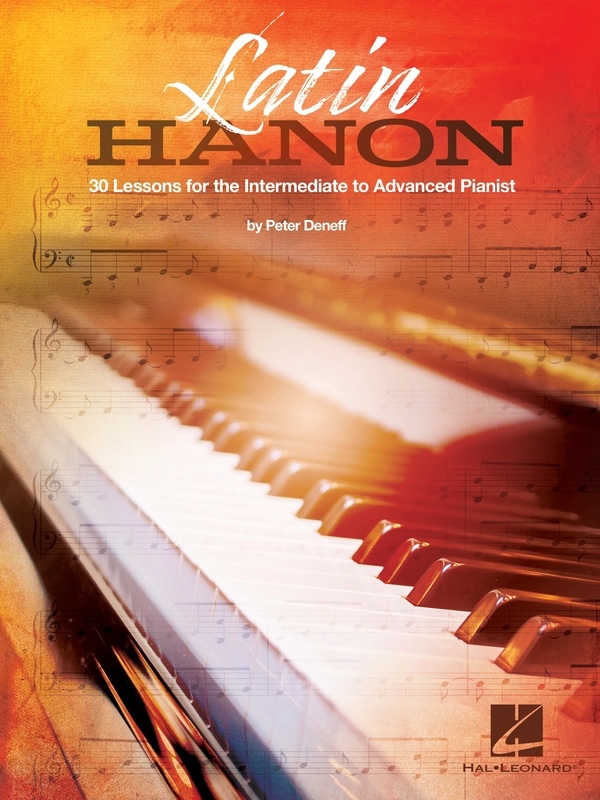
As a pianist in Latin music, you are part of the rhythm section and a melodic lead. This book navigates technical difficulties in various Latin styles that support the rhythmic and technical skills required to play montunos, jazz voicings, and idiomatic comping styles. What I particularly like is the transposition through keys encouraging visualisation of chords and melodies in any harmonic centre. Given the iconic syncopated nature of Latin montunos, this book presents a fantastic opportunity for any student, classical or contemporary, to fine-tune a strong sense of time. This not only supports ensemble playing, but also the ability to subdivide and self-assess tempo discrepancies. For the intermediate or advanced student, this book offers a wealth of exciting new grooves and harmonic colours.
Beyond the score
Consider your students carefully. Select exercises that integrate technical development with the repertoire they are learning to reinforce a holistic music education experience. Don’t hesitate to diverge from the style, explore new realms, open harmonic possibilities, and inspire curiosity. Remember, we are nurturing people in a creative art, of which the technical demands arise from musically expressive goals.

CONNOR TAYLOR
Connor is a piano, theory and classroom music teacher as well as accompanist from Melbourne, Victoria. A passionate music educator, he works in both the school and private studio settings. His piano teaching is creative and holistic, engaging students in unique ways that include composition, integrated theory, and applied technique. Connor was a recipient of the Yamaha Piano Teacher Breakout Award for 2021.
Instagram: @connor_pianist
